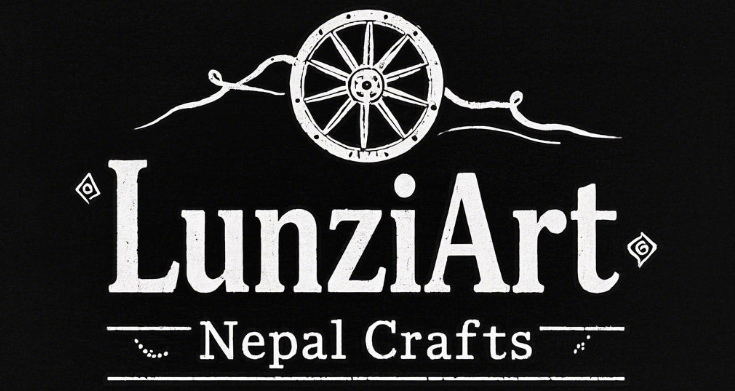Thangka is a form of pictorial literature. The Thangka is an artistic medium through which Buddhist philosophy can be easily explained. The Tibetan word “Thangka” literally means “recorded message”. A thangka is a painting made on a piece of cotton or silk cloth, often depicting a Buddhist deity, scene, or mandala. For over 2,500 years, these intricate scrolls have served as sacred vessels of Buddhist teachings, meditation aids for monks, and luminous testaments to faith. The paintings are primarily used by lamas and monks to spread Buddhist philosophy. To the untrained eye, they are masterpieces of color and detail; to the artists who dedicate their lives to this craft, they are acts of devotion, patience, and spiritual perseverance.
 Most Thangkas are relatively small, but some are very large. Some Thangkas contain significant amounts of gold, silver or natural pigments, which are used to emphasize certain parts of the Thangka or to give it a final, luxurious look. Thangka paintings are also associated with Nepalese rich history and civilization. Thangka paintings are popular because of their Buddhist teachings, as well as because of the Tibetan and Nepali dedication to art. Among the sculptors who have kept this glorious art alive—carrying Nepal's history and culture for thousands of years—is Hom Bahadur Tamang.
Most Thangkas are relatively small, but some are very large. Some Thangkas contain significant amounts of gold, silver or natural pigments, which are used to emphasize certain parts of the Thangka or to give it a final, luxurious look. Thangka paintings are also associated with Nepalese rich history and civilization. Thangka paintings are popular because of their Buddhist teachings, as well as because of the Tibetan and Nepali dedication to art. Among the sculptors who have kept this glorious art alive—carrying Nepal's history and culture for thousands of years—is Hom Bahadur Tamang.
 Born in August, 1965, Mr. Hom is an artist and businessman who emerged from the countryside of the Ramechhap district and has been contentiously contributing to Nepali traditional Thangka art for the past four decades. He has also been a guardian of thangka painting—a tradition he learnt at the age of just 11 under his brother’s guidance. Rising from Nepal’s Tamang community, an ethnic group deeply rooted in Tibetan Buddhism, Hom’s journey began with pigment-stained fingers and a heart committed to preserving this vanishing art.
Born in August, 1965, Mr. Hom is an artist and businessman who emerged from the countryside of the Ramechhap district and has been contentiously contributing to Nepali traditional Thangka art for the past four decades. He has also been a guardian of thangka painting—a tradition he learnt at the age of just 11 under his brother’s guidance. Rising from Nepal’s Tamang community, an ethnic group deeply rooted in Tibetan Buddhism, Hom’s journey began with pigment-stained fingers and a heart committed to preserving this vanishing art.
 Today, he is not only a respected thangka master, but also a businessman who owns a shop selling thangkas, Buddha statues and handicrafts. He is also the founder of a school, gallery and artist shelter in the heart of Budha, Kathmandu, and has trained more than 2,000 students, many of whom have become masters, teachers or studio owners themselves. Similarly, he is involved in and promotes sacred culture through various international fairs and exhibitions. It has now developed into a living heritage where knowledge is freely passed on to those who seek it - regardless of background, education or financial status. "There should be no boundaries between art and artists," said Hom Bahadur Tamang. "Only the dedication of the artist can be affirmed."
Today, he is not only a respected thangka master, but also a businessman who owns a shop selling thangkas, Buddha statues and handicrafts. He is also the founder of a school, gallery and artist shelter in the heart of Budha, Kathmandu, and has trained more than 2,000 students, many of whom have become masters, teachers or studio owners themselves. Similarly, he is involved in and promotes sacred culture through various international fairs and exhibitions. It has now developed into a living heritage where knowledge is freely passed on to those who seek it - regardless of background, education or financial status. "There should be no boundaries between art and artists," said Hom Bahadur Tamang. "Only the dedication of the artist can be affirmed."

As a regular meditation guy, he feels spiritual connections to painting thangka, specializing in the Wheel of Life, referring to it as a discipline to guide your path toward peace and enlightenment. It also has a deep philosophy regarding after death that is to be known by every individual. Yet challenges remain. As fewer students commit to mastery, Hom and his institution work tirelessly to rekindle passion for this art—whether through traditional apprenticeships or groundbreaking collaborations with digital platforms (like Wheel Technology), ensuring thangkas endure in museums, screens, and hearts worldwide. Hom Tamang’s vision is simple: "Thangka is not just art—it’s a language of the divine." Every brushstroke honors century of wisdom, and every pupil carries forward a tradition that transcends time.






